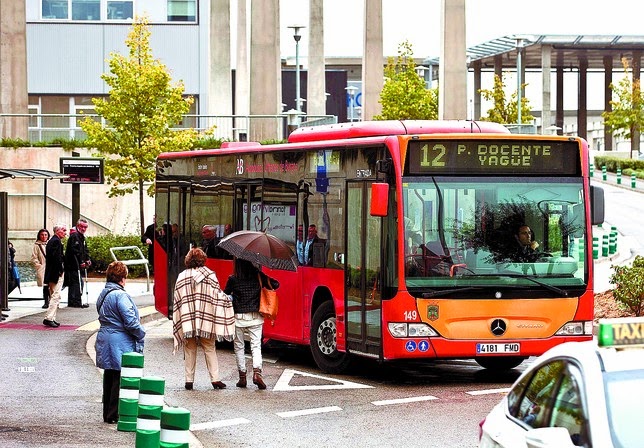Image recorded by René
Brut, journalist,
on 17 august 1936 in Badajoz´s cemetery.
Every war have their simbols and images
wich are kept indelible in the memory of history. The bombing of
Gernika and the slaughter of Badajoz, are some of the highest
exponents that were captured in photos and recordings by
journalists(1). These recordings were seen around the world, showing
the true face of fascism.
The nazi planes that devastated the
civil population of Gernika departed from the aerodrome of Villafría
in Burgos and, at the same time, the Lieutenant Colonel Juan Yagüe
Blanco, lead the columns that killed, during the first days of the
coup, thousands of people in Andalucía and Extremadura. Later on,
Yagüe was promoted to Captain General of the 6th militar
region,wich headquarters were in Burgos, by Franco´s dictatorship.
He was also named “adopted son” and “gold medal” of Burgos,
the highest recognition of Burgos City Council, nowadays Yagüe have
the “adopted son” and “gold medal”.
In the height
of the 21rst century, a foundation lead by Maria Eugenia Yagüe
(daughter of Juan Yagüe Blanco) is organizing an exhibition inside
municipal premises under the headline “One man and the revive of
Burgos. Yagüe”. This would be inconceivable in a minimally
democratic country but eventually the council will
not allow the exhibition in a local public.
Museum military of Burgos, bust of Juan
Yagüe.
In the Army Museum in Burgos, inside
the Diego Porcelos quartering wich comes under the Defence Ministry,
there is an explanatory poster next to his bust, that says things
like... “example of soldier, obedience and discipline...”,
“...pious in victory”, “...took part in the first aerial bridge
in military history”, “...started with a limited column a
victorious advance”, “...his troops liberated Barcelona”. This
place has free access and schoolchildren attend coordinated visits.
Museum military of Burgos, picture
“Uniforms of Liberation´s Crusade 1936-1939”.
Yagüe was not an example of an
obedient soldier as he joined the coup against the Government of the
Republic, democratically elected. At this place there is also to be
found a picture of a monument he had in his native village of San
Leonardo (Soria). This monument was removed in 2009 and this lead his
daughter Maria Eugenia to resign from the PP (Partido Popular) after
29 years of membership. She had the member number 1005.
Yagüe was not either pious in victory.
In Badajoz, the portuguese journalist Mario Neves, asked him about
the rumours saying that 2000 of the 3000 prisoners admited by Yagüe
had been shooted. He answered “not that many”(2). When the
New York Herald Tribune journalist, John Whitaker, asked him about
the shootings, he confessed the slaughter of the 10% of the
population. “Of course we killed them. What did you
expect? Should I take 4000 red prisobers with me when my column had
to move against time? Or should I free them in the rear and let
Badajoz be red again?”(3). He was also clear that he would kill
anyone who would confront democratically. “It is strictly
forbidden the right to strike. The executives of any Union
that go on strike or do no go to work will be taken to a Tribunal and
executed...”.(4)
It is true that he took part in the
“aerial bridge” from the North of Africa to the Iberian
peninsula.in the beginning of the mutiny of July1936. In the museum
nothing is said about the planes of Hitler and Mussolini that did
this first “aerial bridge”. His “limited column” was compound
of a well armed and experienced army of legionary and Moroccan
regulars known before the civil war by their atrocities in the
colonial war in Rif. The Ministery of Defence is still using the
expression “crusade of liberation”. This is a justification of
fascism and coup.
Yagüe was a Viceroy in Burgos in a
decade we do not doubt describing as dreadful (1943-1952). The
widespread saying about Burgos being a town of priests and soldiers
is only half true. It was also a town of families of republican
prisoners, of hundreds of inner exiles and countless mass graves
under our feet. Yagüe ordered to build a neighbourhood of cheapy
flats, near the crammed jail to keep the working people away from the
city centre. He gave his own name to this neighbourhood.(5)
Road sign in Burgos, now.
Recently the United Nations work group
about forced dissaperances is demolishing. The Spanish State was
demanded to stop using tha amnesty law of 1977 as an excuse not to
investigate the forced dissaperances during Franco´s dictatorship.
This group demanded an “exhaustive and impartial” investigation
wich would end in grievous sentences for the people responsible for
these crimes, as well as a public apology and the rehabilitation
suitable for the victims. This has been ignored by the Government.
The non-existant budget that the
Government gives for exhumations, even the lack of a place for
associations to meet and develope their activities is unjustifiable.
This is the case of the association in Burgos that fights for the
recovery of the historical memory of the victims of Franco and the
civil war. The different public administrations do not establish the
mechanics so that the UN recommendations are achieved. We can not
avoid the crimes against humanity comitted during the civil war and
dictatorship. We must require the truth, public apology and justice.
Plataforma Badajoz 1936 Burgos
1-
Documentary History Channel, explanation of René
Brut.(http://www.youtube.com/watch?v=BKzFLsHLmoo)
2-
Cover Lisboa´s Newspaper, 15 de agosto de 1936.
3-
John T. Whitaker, We cannot escape history,
Macmillan, New York, 1943, page 113.
4- Bulletin official extraordinary of
Badajoz´s province, on 14 August 1936.

.JPG)




No hay comentarios:
Publicar un comentario